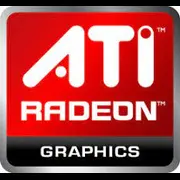ATI Radeon HD 4730

ATI Radeon HD 4730: A Historical Overview and Relevance in 2025
Exploring whether this graphics card is suitable for modern tasks
Introduction
The ATI Radeon HD 4730 is a graphics card released in 2009, during a time when AMD (then still ATI) was competing for leadership in the budget segment. Despite its age, some enthusiasts still use it in older builds. In 2025, its relevancy is approaching zero, but it remains an interesting artifact for retro PC enthusiasts. This article will delve into its features, performance, and place in the modern market.
1. Architecture and Key Features
TeraScale 2 Architecture
The HD 4730 is built on the TeraScale 2 architecture (RV770CE) with a 55 nm manufacturing process. The chip includes 640 stream processors, 32 texture units, and 8 render backends. It is a cut-down version of the HD 4830, with a memory bus width reduced from 256 to 128 bits to lower costs.
Technologies of Its Time
The card supports DirectX 10.1 and OpenGL 3.3, allowing it to run late 2000s games on medium settings. However, modern features like ray tracing (RTX), DLSS, or FidelityFX are absent. Among its "bonuses" is the CrossFireX technology for combining two cards, but in 2025, this is practically meaningless.
2. Memory: Modest Specs
GDDR5 and Limited Bandwidth
The HD 4730 is equipped with GDDR5 memory, available in either 512 MB or 1 GB (depending on the version) with a 128-bit bus. The memory bandwidth is 57.6 GB/s (at a memory clock of 900 MHz). For its time, this was sufficient for gaming at resolutions up to 1680×1050, but the narrow bus becomes a bottleneck at higher settings.
Why This Matters Today
In 2025, even 4 GB of video memory is the minimum for comfortable gaming. The 512 MB or 1 GB of the HD 4730 makes it unsuitable for modern projects. Even web browsers with heavy layouts can cause lags.
3. Gaming Performance: Nostalgia for the Past
Games from 2008–2010
- Crysis (2007): 25–35 FPS on medium settings at 1280×720.
- Left 4 Dead 2 (2009): 60+ FPS at 1680×1050.
- World of Warcraft (2008): 40–50 FPS on high settings.
Modern Projects
Running games from 2020 onward (e.g., Cyberpunk 2077 or Hogwarts Legacy) is impossible due to the lack of support for DirectX 12 Ultimate and limited power. Even indie games on the Unity engine in 2025 may require more resources.
Resolutions and Ray Tracing
The card is rated for 720p–1080p in older titles. Ray tracing is not supported—the technology emerged a decade after its release.
4. Professional Tasks: Not the Best Choice
Video Editing and 3D Modeling
The HD 4730 is poorly suited for editing in DaVinci Resolve or Blender. Opening complex scenes in Maya will cause stuttering. OpenCL 1.0 support is limited, and CUDA (NVIDIA) is absent. For rendering, it's better to use the integrated graphics of modern processors.
Scientific Computations
The card lacks specialized cores for ML/AI. Its computing power (about 480 GFLOPS) is hundreds of times lower than modern GPUs like the Radeon RX 7600 (up to 21 TFLOPS).
5. Power Consumption and Heat Generation
TDP and Power Supply Recommendations
The HD 4730 has a TDP of 80 W. A power supply of 400 W with a 6-pin PCIe connector is sufficient for a build using this card.
Cooling and Cases
The stock cooler manages cooling but may be noisy under load. The card is compact (~20 cm long), fitting well into small cases. However, by 2025, even budget cases have better cooling than those from 2009.
6. Comparison with Competitors
2009 Market
- NVIDIA GeForce 9800 GT: The closest competitor. Advantages include a 256-bit memory bus and support for PhysX.
- AMD HD 5670: Newer but less powerful.
Modern Analogues
In 2025, the HD 4730 can be compared to the integrated graphics of the Ryzen 5 8600G (Radeon 760M). The latter outperforms it by 3–4 times and supports all modern APIs.
7. Practical Tips for Users in 2025
Power Supply
A 400 W power supply with an 80+ Bronze certification is sufficient. Example: EVGA 400 BR.
Compatibility
- Interface: PCIe 2.0 x16 (compatible with PCIe 3.0/4.0, but no speed boost).
- OS: Official drivers are available only up to Windows 7. There may be issues on Windows 10/11.
Drivers
Use modified drivers from the community (e.g., Amernime Zone) for partial support of newer operating systems.
8. Pros and Cons
Pros
- Low power consumption.
- Compact size.
- Support for older games and OS (XP, Vista).
Cons
- Outdated APIs (DirectX 10.1).
- Little video memory.
- Lack of support for modern technologies.
9. Final Conclusion: Who Should Consider the HD 4730?
This graphics card is a relic that may interest:
- Collectors and retro PC enthusiasts: For authentic builds from the 2000s.
- Owners of old systems: As a temporary solution for basic tasks (office work, video viewing).
Why Not to Buy It in 2025?
Even budget GPUs like the Intel Arc A380 (price: $120) offer 10 times the performance, support for DirectX 12, and HDMI 2.1. The HD 4730 is a choice for niche uses, not for everyday use.
Conclusion
The ATI Radeon HD 4730 symbolizes an era when 512 MB of memory was enough for gaming. In 2025, it falls short even against integrated solutions but retains the charm of "hardware" from the past. It’s worth buying only for nostalgic projects—in all other cases, it’s better to choose a modern alternative.
Basic
Memory Specifications
Theoretical Performance
Miscellaneous
Benchmarks
Compared to Other GPU
Share in social media
Or Link To Us
<a href="https://cputronic.com/en/gpu/ati-radeon-hd-4730" target="_blank">ATI Radeon HD 4730</a>